New Info on Ace Frehley’s 1970s Gear
Premier Guitar recently posted an interview with Ace Frehley in which Ace FINALLY talks with some specifics about what he used in the studio back in the early KISS days. Not a lot, but some. Here it is:
“On the early KISS records, I used my tobacco-sunburst Gibson Les Paul Standard with a rewound hot pickup [rewound by Larry DiMarzio?] through a Marshall stack or old Fender tweed amp on most of the studio recordings. I used an Electro-Harmonix Big Muff to overdrive them sometimes.
“Later I got a cherry-sunburst Les Paul Custom and an old ’59 Les Paul Standard, which dominated my studio recordings in the late ‘70s. My 1978 solo album, Ace Frehley, really shows off what a Les Paul guitar can do in the studio. I recorded almost the whole album exclusively with my 1959 vintage sunburst Les Paul.
“I use Gibson Les Paul Customs live because they’re simply the best guitars for loud rock ‘n’ roll. I’ve always said, ‘Just plug a Les Paul into a Marshall amp and turn it up to 10!’ It’s a no-brainer.â€
It’s a little-known fact that live, and possibly in the studio, in the early KISS days Ace’s Marshall Super Leads had 6550 power tubes, not the typical Marshall EL-34s. EL-34s are warmer and get a little more compressed and dirtier than 6550s. So it’s interesting that he would use a hot pickup and a cleaner amp.
On Anton Fig
I’ve said before here that the drumming on the 1978 solo album and on Anomaly is outstanding – really helps the songs. The guy responsible for that is Anton Fig, the Late Show with David Letterman drummer. Here’s what Ace said about Anton in the interview – interesting info:
“I met Anton around the time I was putting songs together for my first solo album when I was with KISS. He had only been in the country for a few years, because he’d grown up in Cape Town, South Africa, and had been around that amazing beat his whole life.
“Eddie Kramer heard his demos and asked if he wanted to work with me. Ironically, I had another friend, Larry Russell, who also heard Anton play and came to me independently and said he had a great drummer for me. To me, that’s karma, so I jumped at the chance to jam with him. We’ve been close friends ever since.
“The greatest things about Anton are his fills and the space he leaves. He doesn’t try to fill up everything, and I really like the fact that he plays slightly behind the beat, à la John Bonham. A lot of drummers play on the beat, and when they get excited and the adrenaline is pumping they play ahead of the beat, which gives some songs a nervous feel. I like to have a relaxed feel, and Anton always holds the song back with a solid rhythm.
“Me and Anton have been playing so long together we almost have this telepathic communication, where I’ll think something and he’ll do it, or I’ll just look at him and he’ll know what I’m thinking. Things come together so quickly, and it’s just a joy to work with him.”
Notable
> For anyone curious about Ace touring – no Anomaly tour in the U.S. yet! – here’s what he said: “I finished a successful European tour, and I’m getting ready to go out again to Australia. Dates in the States will be coming up, and I’ll be doing festivals in Europe this summer. I’ve got a Behind the Player DVD coming out, and I’ve already been writing for the next record.”
> The Ace interview – one of the best I’ve read – was done by Rich Tozzoli, one of the Anomaly engineers.
Category: Ace Frehley, Electro-Harmonix, Fender, Les Paul, Marshall

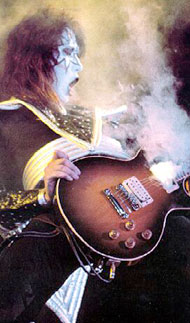




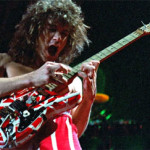
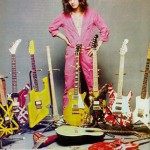
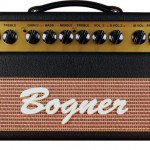
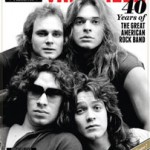
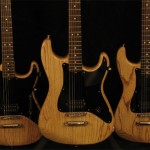
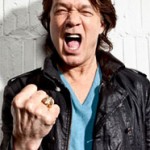
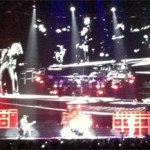
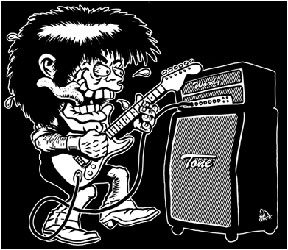

I’m going to comment on this as a guitarist and an amp designer/builder/tech. The article mentioned 6550’s. The 6550’s were an industrial tube, never meant for audio. However, they were very rugged and lasted a long time. The EL34’s went through a period where they were a bit fragile, so people looked for something more reliable. As far as the sound—let’s go ahead and put this out there: Many people repeat hearsay that comes from uneducated sources, a la Aspen Pitman. Aspen is the original snake oil salesman. He knows little or nothing about electronics. Originally, Groove Tubes were reject tubes that he bought up and relabeled using his own grading system. This was a terrible idea, but being the salesman that he is, people went for it. Groove Tubes these days are whatever he can find, relabeled. There are no more U.S. made reject tubes. So now, Groove Tubes are Russian, etc. just like everyone else’s. The point of my explaining this is the statement the author makes about using a “clean amp”. This is where Aspen’s B.S. comes in. The distortion produced by guitar amplifiers has little or nothing to do with the output tubes. Output tube distortion sounds really bad. What you are hearing when a vintage Marshall is cranked-up is the preamp tubes and the phase splitter tube overdriving. Rarely, if ever, do you hear the output tubes adding to that. Especially in a master volume situation, it almost doesn’t matter what output tubes are in the amp, it’s going to sound about the same. This B.S. about EL34’s being “warmer”, with “more complex harmonics”, etc. etc. comes from Hunt Dabney, a friend and cohort of Aspen’s who is a Hi-Fi guy. This is where the whole “matched” tube thing comes from. A Fender or Marshall tube guitar amplifier doesn’t know if it’s output tubes are matched or not. However, an old MacIntosh stereo Hi-Fi does. Big difference. Anyway, in the real Marshall amps we used to have, changing from one output tube to another type made little or no sound difference.
I am not an electronics expert, but I wanted to comment on what Jim said above. I don’t want to start a bicker or a fight but just wanted to weigh in. I have a non-master volume Trainwreck Express that I had set up to run in cathode bias mode and with the appropriate transformers to run several different power tubes. I hear a big difference in tone going from 6V6 to EL34 to KT77 to 6CA7, while keeping the preamp section the same.
Now, I do agree that the preamp does affect the tone A LOT, specially the V1 position. However to say that the output section does not is a bit of a gross overstatement. Certainly in a master volume situation the effect of the preamp can be exaggerated. I will also agree that the need for matched tubes in guitar amps is folklore, specially in class A type amps.
I agree!!! I’m not a engineer but,from what have read and have tested.i agree…..srv used a mild pre amp tube?( powerfull but clean ) I forget the number to make the distortion in the power tubes scream?i believe? .i love playing and thinking outside the box.I pute my 65 bandmaster to another test ( people say wimpy transformer? I said ok it can handle 6v6’s instead of 6l6’s ( less power ) .this thing is a tone machine!!!!.